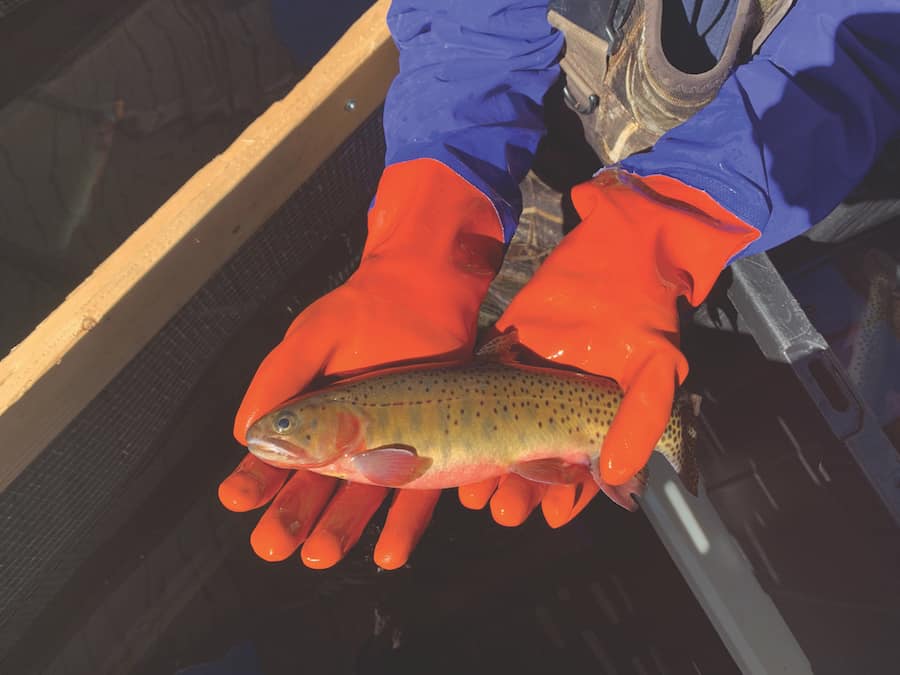Local Gem
The Durango Fish Hatchery
and Wildlife Museum
Summer/Fall 2021
It’s a sunny and brisk March morning as I pull into Colorado Parks and Wildlife’s Durango State Fish Hatchery parking area for a tour with assistant hatchery manager Ryan Votta. As a local parent, I’ve been here many times with my son. He loves feeding the resident fish, courtesy of a fish-food dispenser placed next to the 14 outdoor raceways (artificial channels), some of which contain the various species of fish found here at the hatchery. Those species include rainbow, brown, cutbow, and cutthroat trout, as well as kokanee salmon.

Initially built in 1903, this local gem claims the honor of being the oldest state-owned fish hatchery in Colorado. It is also a significant contributor to the popular activity of recreational fishing, which contributes roughly $1.9 billion annually to the state’s economy. In 2020 alone, the hatchery raised approximately 1.3 million fish for stocking roughly 50 rivers, streams, and reservoirs in the southwest region of the state. Additionally, the hatchery provided 350,000 native cutthroat trout eggs and 1.6 million kokanee salmon eggs to other hatcheries, which, after they hatch and grow to two inches in length, will be used for stocking the local rivers, reservoirs, and high-elevation lakes that are popular among many anglers.
Though the facility is located next to the Animas River, all water used for rearing fish comes from three nearby natural springs. The water is treated, supplied with additional oxygen, and pumped into the facility to provide “good, clean, cold water,” as Ryan put it, to the resident fish.

In addition to the hatchery, the 14-acre facility is also home to the family-friendly Wildlife Museum. Visitors may wander freely through the eclectic space and get up close and personal with more than 50 different wildlife species—including bobcats, black bears, and various birds of prey—through the taxidermic mounts on display around the museum. Kids and adults alike can test their animal knowledge through one of the many interactive exhibits that are both educational and fun. (At press time, the Wildlife Museum was still closed due to COVID-19, but the hatchery was open. To check, call the museum before visiting.)

Wildlife sightings are not restricted to inside the museum, though. “Over 200 bird species have been recorded here, including a wood thrush, which was a first-ever county record,” Ryan mentioned. “We have resident mule deer roaming the grounds and also the occasional black bear.” Other interesting wildlife sightings include a long-tailed weasel, gray foxes, beavers, and even a river otter spotted in the pond adjacent to the hatchery.
Admission to both the wildlife museum and hatchery is free and donations are appreciated. The hatchery is open year-round, every day from 8 a.m. to 4 p.m., and the Wildlife Museum is usually open to the public (in non-pandemic times) from May 15 to September 15. School groups and other group tours can be scheduled by appointment at 970-375-6766.
Don’t forget to bring quarters for the fish food!





